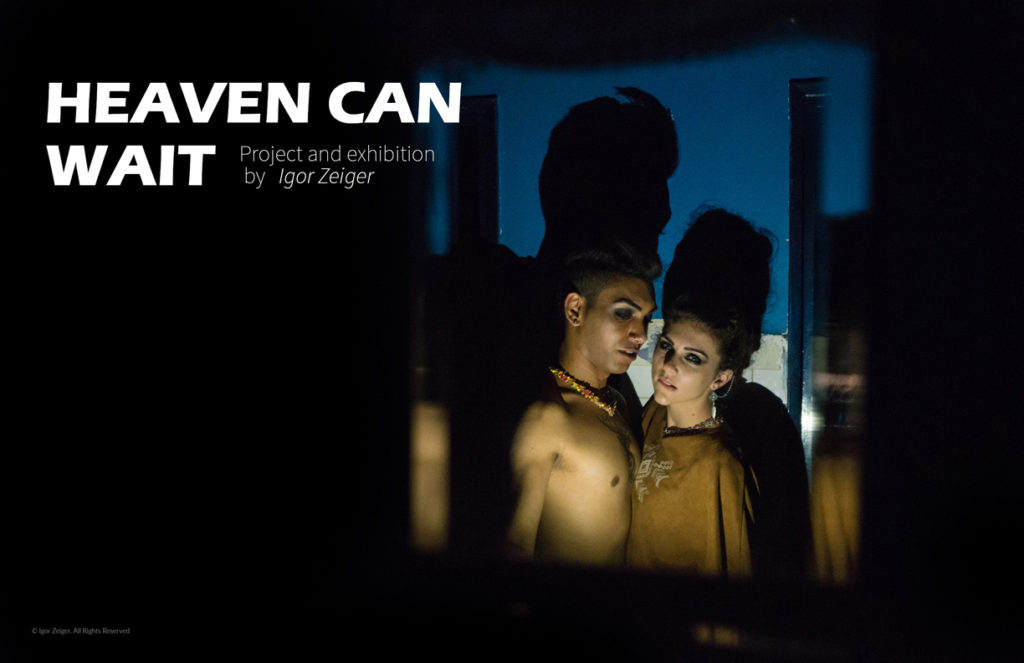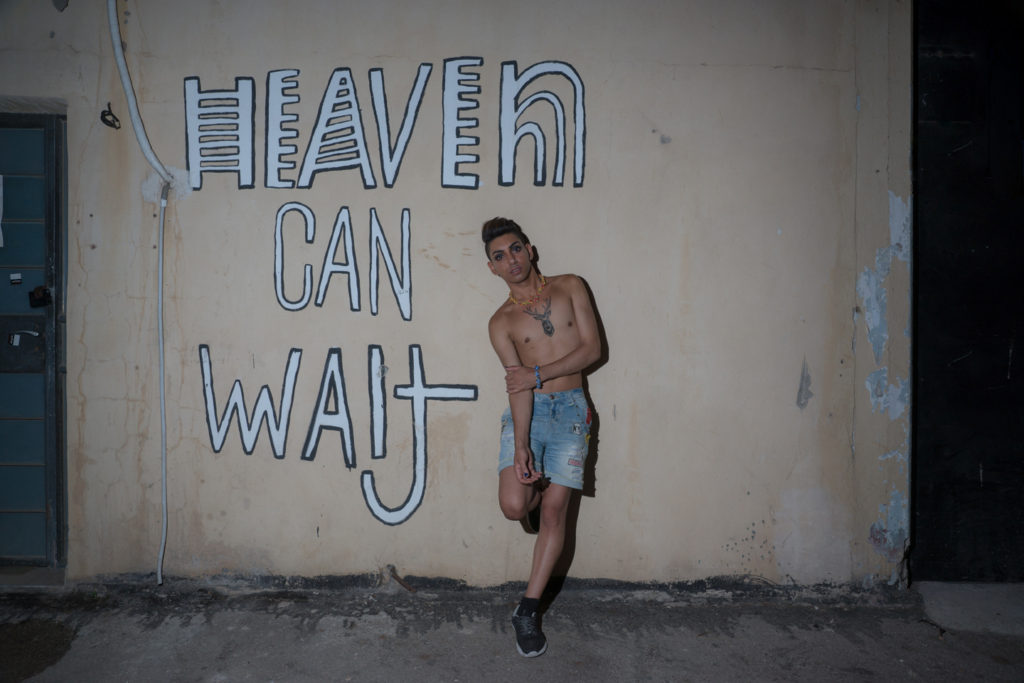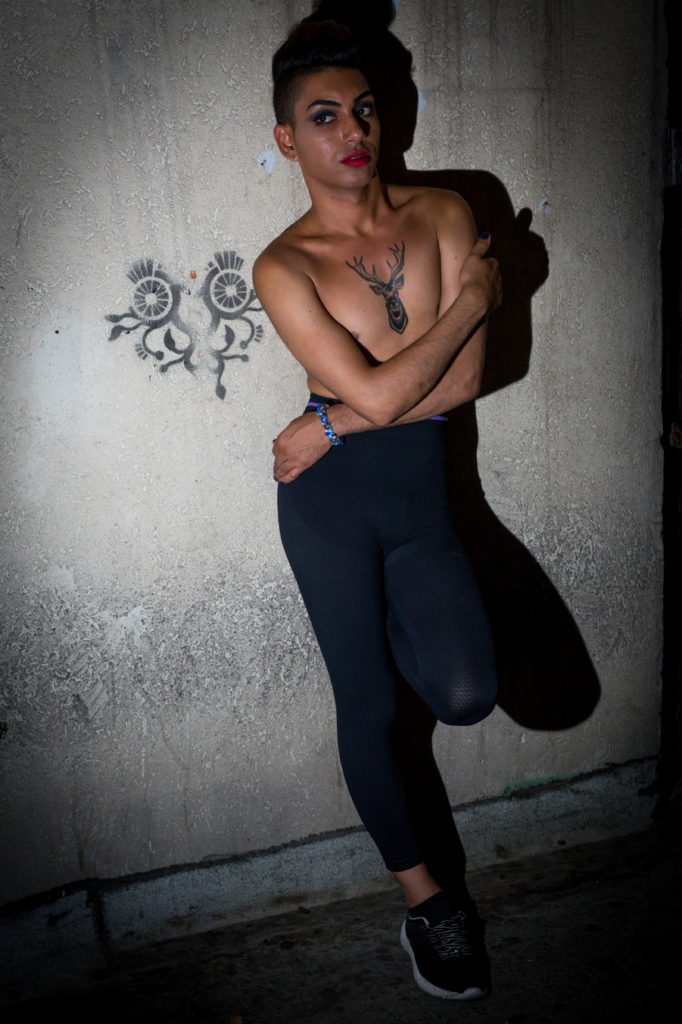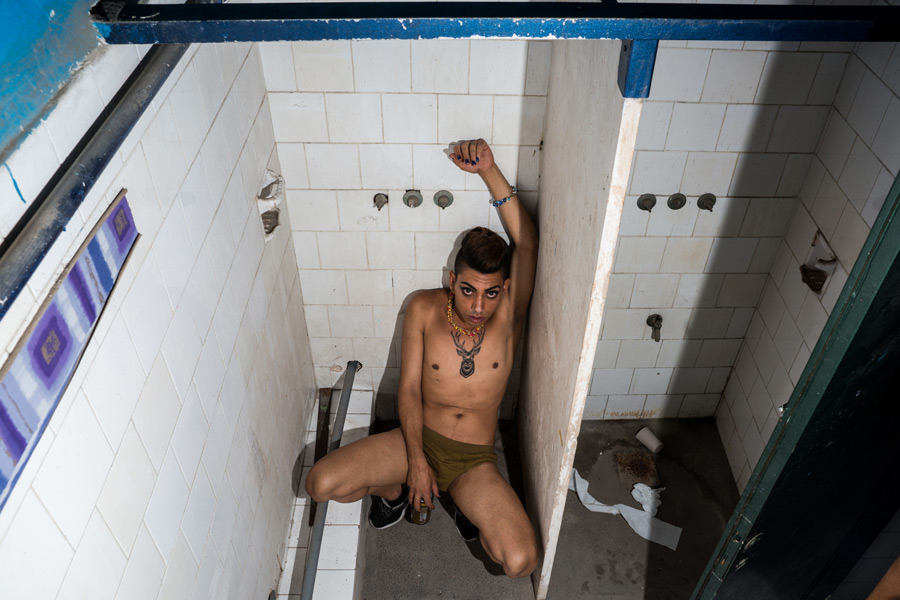
REVIEWED BY IVAR VAN EMDEN
Karam Dadu was born in Akko and led a regular life of every Arab teenager until he was 14. He told me he can never forget the day of a family member wedding, when he was told by his mother he was next to wed. It was told him as a happy joke, but the answer changed his whole life. Karam told his family he was into boys. The abuse and violence started the same moment and continued till he fled the family and Acco the same day he turned sixteen.

“I hated myself every day.”, he told me, during those two years. “I want to die” was every day single thought. He fled to Tel Aviv, lived on the streets and endured struggles most people of his age can’t even imagine. He felt the life was going to end. But the seemingly feeble boy became strong young man. He found refuge in Beit Dror – A shelter for young gays, banished by their families, started to work and perform. He discovered the world of drag performances and became one of the best known drag queens on Tel Aviv. He hasn’t only performed, but also wrote his shows by himself.
He found passion in cooking and reached to position of su-chef in one of the best Tel Aviv vegan restaurants.
He participated in a famous Israeli cooking show on TV. He left Beit Dror, but continued to volunteer there and cook for dozens of boys for the holidays. He had the photography exhibition about him in Tel Aviv LGBT center gallery and the documentary film about his life shown during Tel Aviv LGBT Film Festival. He even tried to enlist to the Israeli Army, but was rejected.
All this before he even turned 25. But the seemingly fairy tale story wasn’t going to work out in Israel. He still had the family in Akko, who reached him even in Tel Aviv and harassed him. Even with all his success, he was gay and outcast to his own kin. For Israeli people he was an Arab guy and there was always the tension of not being completely blending in. The decision came after his father publicly assaulted him during the Master Chef TV show. Karam decided to leave. He left for Amsterdam year ago with the idea never to return. He now lives there with his boyfriend, works and perform in shows. He gained his freedom, but we lost a wonderful human being, who could make the place we live in a bit better one …
Igor Zeiger succeeded to catch part of Karam’s journey while he was still living in Tel Aviv in Israel. The project was exhibited in Haifa Museum of Art in Israel as part of exhibition “Queer Performance: From Gilbert & George to the Present Day”, curated by museum’s chief curator Svetlana Reingold. In addition to the exhibition several works from Zeiger’s project were included in the museum’s permanent collection of art.

© Igor Zeiger. All Rights Reserved
In his project, Zeiger has reflected a powerful idea of rights. Sexuality, as well as art, has always been a part of human history. But through longtime sexuality was only a latent motif through art. Igor’s project, however, brings a more radical attitude and a more free expression of Karam’s and others sexuality through art. Igor Zeiger’s art wants to bring more understanding of the phenomenon of sexuality and LGBTQ+ culture. It is well known that he sought an answer throughout the history of the question, “Why does artwork?” But he never gave it. Still, it is indisputable that art has always reflected the historical moment in which it emerged.
On the other hand, the way in which homosexual love has influenced visual creativity is largely related to the status of equally-oriented people in society at the time they were created. Artistic performers showing love and sexual relationships among people of the same sex and that have a long history. Nevertheless, it is of paramount importance a channel through which the ideas of sexuality are packed with the broad masses.
The photo is something that is familiar and accessible to everyone and is therefore adaptable to understanding complex phenomena.
Therefore, Igor Zeiger has found a good way to present the importance of this idea.
The heterosexual world decides that non-heterosexuals, though in all aspects of human beings, should be defined solely through sexual acts; by such definition, they will be deservedly disenchanted. However, what this same heterosexual world is most concerned about no heterosexuals is that they refuse to restrict sex to what was its primary physical meaning, to procreation. On the contrary, they completely dissociate themselves from procreation and point out that sex can have a completely different meaning for the human race. This exhibition wants to show this attitude in a series of photographs.
Everything that is contrary to the covenant. Zeiger’s idea is the question of the gay sensibility. For him, art is not only a way of expressing feelings drawn to the bonds of a patriarchal society, but a kind of purification that gives legitimacy to actions of the LGBTQ+ society. Zeiger understands that empowering gay, lesbian and queer identities, politics, and culture is constantly opening up new opportunities for connecting different people and different cultures, thus supporting the process of globalization. Primarily his work can compare with Robert Ma, who is known for photographs of flora and – naked men. He is one of the most controversial personalities of a contemporary art scene, whose work has begun a discussion on whether such art should be funded and exhibited. But of course, he was not the only one.
Zeiger’s art can be viewed side by side with Adi Nes. The way he mixes masculinity and homoerotic sexuality is very similar to Zeiger’s view of the same ideas in naked man. The men depicted in the photographs have a lot of sensitivity, but also the pain – even they can be seen as wanting to start and end the struggle for their rights.

© Igor Zeiger. All Rights Reserved
ABOUT IGOR ZEIGER
“With photography I am trying to create a new reality.
Its quest for perfection, for impeccable light. And, as every quest, it will never end. Because, in a fraction of second everything changes, creating more and more impressive visual concept. The most common perception is that photography is freezing the moment.
I don’t believe in it. It’s much more than that. Photography, as any other form of art is providing the basis for spectators to see what he desires to see. We just use the media of photography to aid people to get out of their mind borders, to use their imagination.
My happiest moment is when a visitor in a gallery or exhibition does not ask what I meant in specific photograph, but when I hear an explanation what he sees and that explanation differs from what I saw when I made the picture. Because every picture is a world by itself, it is not a moment, frozen in time. The perfect picture for me is when everybody sees something that clicks the button and this something is always different.”

© Igor Zeiger. All Rights Reserved
Read the Full Article on Lens Magazine Issue #52

